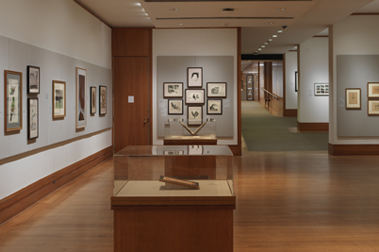Evening Fishing, Longparish
Sir Francis Seymour Haden British
Not on view
Seymour Haden was the unlikely combination of a surgeon and an etcher. Although he pursued a very successful medical career, he is mostly remembered for his etched work as well as for his writings on etching. He was one of a group of artists, including James McNeill Whistler (1834–1903) and Alphonse Legros (1837–1911), whose passionate interest in the medium led to the so-called etching revival, a period that lasted well into the twentieth century. The extolling of etching for its inherent spontaneous qualities reached its pinnacle during this time. While the line of the etching needle, Haden wrote, was "free, expressive, full of vivacity," that of the burin was "cold, constrained, uninteresting," and "without identity."
A river landscape in the evening; a fisherman standing by the riverbank, at left; a wooden bridge and several cedar trees in background.
"State II (H1). Addtional burnishing so that the sky and the highlights on the water are lighter; a bridge in the distance, a man fishing in the left foreground and a slender tree beyond habe also been burnished in."
[Source: Schneiderman, p. 407]
"Published State: First.-Only two impressions of this beautiful plate were printed, as, when about to be re-printed, it was found that, possibly owning to the softness of the copper, satisfactory impressions could not be obtained. The plate was re-grounded but never scraped. Colls. Brit. Mus., and Harris B. Dick."
[Source: Harrington, p. 117]
